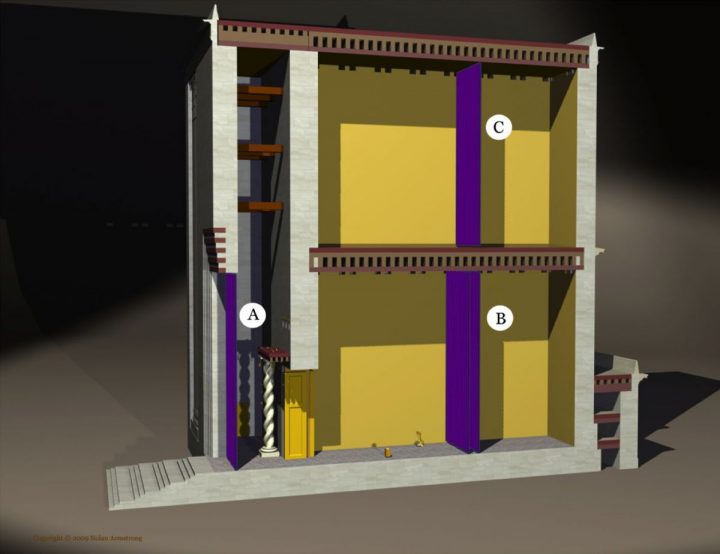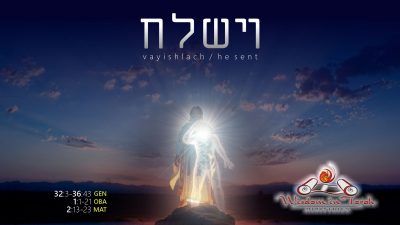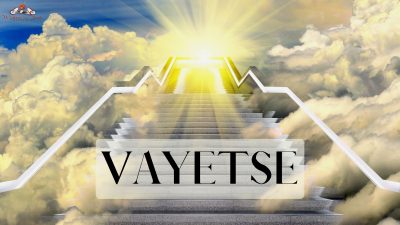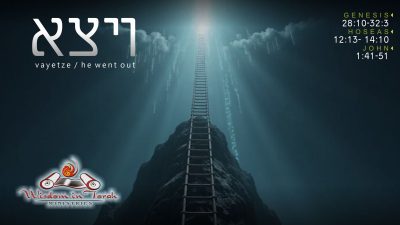
Don't Forget to Share!
Halacha 1
The entire Temple complex was not built on flat ground, but rather on the incline1 of Mount [Moriah.] Thus, a person who entered from the Eastern Gate of the Temple Mount would proceed to the end of the chayl on one level.2
He would ascend from the chayl to the Woman's Courtyard on twelve steps. Each step was half a cubit high and half a cubit wide.3
One would proceed through the entire Israelites' Courtyard on one level8and ascend from it to the Priestly Courtyard [using] one step, one cubit high.9
Above [that step] was a platform of three steps.10 Each step was half a cubit high and half a cubit wide.11 Thus, the Priestly Courtyard was two and a half cubits higher than the Courtyard of the Israelites.
One would proceed through the entire Priestly Courtyard,12 [the area of] the Altar,13 and the space between the Entrance Hall and the Altar14 on one level. From there, one would ascend to the Entrance Hall using twelve steps.15 Each step was half a cubit high and half a cubit wide.16
The Entrance Hall and [the remainder of] the Temple building were both on the same level.17
Thus, the ground [on which] the Temple building [was located] was 22 cubits higher than the ground [on which] the Eastern Gate [was located].18
The Eastern Gate was twenty cubits high.19 Accordingly, a person standing opposite the Eastern Gate could not see the Temple building.20 For this reason, the wall above this gate was low.21 Thus, the priest [who offered theParah Adumah] could see the opening of the Temple when he sprinkled its blood,22 while standing on the Mount of Olives.23
There were chambers under the Courtyard of the Israelites opening up to the Women's Courtyard.24 There, the Levites stored their harps, lyres,25cymbals, and other musical instruments.26
The Levites stood on the platform which ascends from the Courtyard of the Israelites to the Courtyard of the Priests, when they chanted songs over the sacrifices.27
[Regarding] the chambers that were built on consecrated ground, but which opened up to an area that was not consecrated:28 If [their roofs] were on the same level as the earth of the Courtyard, their inner space is not consecrated,29 but their roofs are consecrated.30
If they are not on the same level [as the Courtyard], their roofs are also not consecrated, for the roofs and the upper floors [of the structures in the Temple Courtyard] were not consecrated.31
Therefore, sacrifices of the highest degree of sanctity32 may not be eaten on these roofs,33 nor may sacrifices of a lesser degree of sanctity34 be slaughtered there.35
[Regarding the chambers] which were built on unconsecrated ground, but were open to consecrated ground:36 Their inner space was considered consecrated when eating sacrifices of the most holy order.37 However, the sacrifices of a lesser degree of sanctity were not slaughtered there. [Similarly,] a person who enters while ritually impure is not required [to bring a sin offering].38
The roofs [of these chambers] are considered as unconsecrated ground in all respects.39
The underground passageways which open to the Temple Courtyard40 are consecrated.41 Those that open to the Temple Mount [outside the Courtyard] are not consecrated.42
The windows43 and the width44 of the wall are considered within [the Courtyard] in regard to partaking of the sacrifices of the most holy order and [entering while] ritually impure.45
We may not expand [the limits] of the city [of Jerusalem] or of the Temple Courtyard52 unless receiving the consent of the king, a prophet,53 the Urim V'Tumim,54 and the Sanhedrin of 71 judges,55 as [Exodus 25:9] states: "According to all that I show you, [the design of the Sanctuary]...so shall you make it." [The latter phrase was interpreted by our sages to mean that the same conditions should apply in] future generations.
[The presence of a king is required] because Moses, our teacher, was a king.56
How do we extend [the limits of] the city?57 The Sanhedrin must offer two thanksgiving offerings.58 [Then, two priests]59 take the leavened breads from these offerings [and proceed]. The Sanhedrin would follow the thanksgiving offerings.60 The thanksgiving offerings [would not proceed together, but] one would follow the other.61
They would stand on each and every corner and every single stone in Jerusalem, [playing] harps, lyres, and cymbals, and reciting [Psalms 30]: "I exalt you, Lord, for You have uplifted me...."62
[They would proceed] until reaching the end of the place [which they desired to] consecrate. There, they would stand and eat one of the two thanksgiving offerings. The other was burnt. A prophet would determine which was eaten and which was burnt.63
Similarly, [if the Sages desire] to extend the [limits of the] courtyard,64 they must consecrate it with the remaining portion of the meal offering. Just as the thanksgiving offering, which must be eaten inside Jerusalem consecrates it, so, too, the remaining portion of the meal offering, which may only be eaten inside the Temple Courtyard,65 consecrates it. It is to be eaten at the end of the space which they desire to consecrate.66
Any place which was not [consecrated] with all the above [elements] and according to the above procedure is not thoroughly consecrated.67 ThoughEzra offered two thanksgiving offerings68 [to dedicate the city,] he merely carried out a testimonial act. The Sanctuary was not consecrated through his deeds, for neither a King nor the Urim V'Tumim69 were present there.70
[If so,] how was [the Second Temple] consecrated?71 With the first consecration performed by Solomon, for he consecrated the Temple Courtyard and Jerusalem for that time and for eternity.72
Therefore, we may offer all the sacrifices [on the Temple site], even though the Temple itself is not built.73 Similarly, sacrifices of the most holy order can be eaten in the entire [area of the] Courtyard, even though it is in ruin and not surrounded by a divider.74
We may also eat sacrifices of lesser sanctity and Ma'aser Sheni75throughout Jerusalem,76 even though [it is not surrounded by] a wall, for through its original consecration, it was consecrated for that time and for eternity.
16.77 Why do I say that the original consecration sanctified the Temple and Jerusalem for eternity,78 while in regard to the consecration of the remainder of Eretz Yisrael, in the context of the Sabbatical year, tithes, and other similar [agricultural] laws, [the original consecration] did not sanctify it for eternity?79
Because the sanctity of the Temple and Jerusalem stems from theShechinah, and the Shechinah can never be nullified.80 Therefore, [Leviticus 26:31] states: "I will lay waste to your Sanctuaries." The Sages declared:81 "Even though they have been devastated, their sanctity remains."82
In contrast, the [original] obligation to keep the laws of the Sabbatical year and tithes on the Land stemmed from the fact that it was conquered by the [Jewish people, as a] community.83 Therefore, when the land was taken from their hands [by the Babylonians,] their [original] conquest was nullified. Thus, according to Torah law, the land was freed from the obligations of the Sabbatical year and of tithes because it was no longer Eretz Yisrael.84
When Ezra returned [to Eretz Yisrael] and consecrated it, it was not sanctified by means of through conquest, but rather through Chazzakah.85Therefore, every place which was repossessed by the [exiles returning from] Babylon and consecrated when Ezra consecrated [the land] the second time, is sacred today.
Thus, as explained in Hilchot Terumah, it is necessary to keep the laws of the Sabbatical years and the tithes [on this land] even though it was taken from [the Jewish people in later years].86
Chapter 7
There is a positive commandment to hold the Temple in awe,1 as [Leviticus 19:30] states: "And you shall revere my Sanctuary."2 Nevertheless, it is not the [physical building of] the Temple which must be held in awe, but rather, He who commanded that it be revered.3
How is reverence for it manifest? A person should not enter the Temple Mount holding a staff,4 or with sandals on his feet,5 or wearing only underwear,6 with dust on his feet, or with money wrapped in his kerchief.7
It is superfluous to say that it is forbidden to spit on the entire Temple Mount.8 If one must spit, he should let it be absorbed in his clothing.9
One should not take a shortcut through the Temple Mount, by entering from one gate, and leaving from the opposite one, in order to shorten the way.10Rather, one should walk around from the outside, entering only for the purpose of a mitzvah.11
All who enter the Temple Mount12 should [face] the right side, walk around [in that direction],13 and leave on the left side.14 [This applies to everyone] except to one to whom [a grievous] event occurred. He would circle around towards the left side.15 Therefore, [those who met him] would ask him: "Why are you circling towards the left?"16
"Because I have become a mourner," [he would answer].
"May the One Who rests in this House comfort you," [they would reply].
[Or he might answer:] "Because I have been ostracized."17
[In which case, they would reply:] "May the One Who rests in this House bring about a change in your heart and thus, you will follow the words of your colleagues. Then, they will draw you near."18
Anyone who has completed his service [in the Temple and desires] to leave, should not [turn around and] leave with his back to the Temple. Rather, he should walk backwards slightly19 and [then], walk slowly, and [turn] to his side20 until leaving the Temple Courtyard.21
Similarly, the members of the priestly watch,22 the representatives of the Jewish people,23 and the Levites [when they descend] from their platform,24should leave the Temple in this manner, similar to one who steps backwards after his prayers.25 All these [are expressions of] reverence for the Temple.
A person should not act frivolously before the gate of Nicanor, the eastern gate of the Temple Courtyard,26 for it is positioned opposite the chamber of the Holy of Holies.
Everyone who enters the Temple Courtyard should walk in a dignified manner,27in the region where he is permitted to enter.28 He should conceive of himself as standing before God, as [I Kings 9:3] states: "My eyes and My heart will be there forever."
One should walk with awe, fear, and trembling,29 as [Psalms 55:15] states: "We would walk in the House of the Lord with fervor."30
It is forbidden for anyone to sit in the Temple Courtyard,31 [for] sitting in the Temple Courtyard is prohibited32 except for the Kings of the House of David, as [II Samuel 7:18] states: "And King David entered and sat before the Lord."33
The Sanhedrin34 met in the half of the Chamber of Hewn Stone which was not consecrated.35
Even though, the Temple is now in ruin because of our sins,36 a person must hold its [site] in awe, as one would regard it when it was standing.
[Therefore,] one should only enter a region which he is permitted to enter. He should not sit in [the area of] the Temple Courtyard, nor should he act frivolously when standing before [the place of] the eastern gate, as [implied by Leviticus 19:30]: "You shall observe My Sabbaths and you shall revere My Sanctuary." [Explaining the analogy between the two commands, the Sages comment:]37 "Just as the observance of the Sabbath [applies] for eternity, so too, the reverence for the Temple must be eternal. Even though it is in ruin, it remains holy."
At all times,40 a person may not defecate41 or sleep42 [with his body positioned] between the east and the west.43 It is superfluous to state that one should not place a toilet between the east and the west in any place [throughout the world,] for the Temple is in the west. Therefore, one should not defecate to the west nor to the east, for it is opposite the west. Rather, we should always defecate and sleep [with our bodies] to the north and south.44
Whoever urinates from Mt. Scopus inward to the city should not sit facing the Temple. Rather, [he should position himself] to the north or to the south, or have the Temple at his side.45
A person may not make46 a house47 according to the Temple's design,48 a porch with the design of the Entrance Hall,49 a courtyard resembling the Temple Courtyard,50 a table according to the design of the Table for theShowbread, or a lamp in the design of the Menorah.51 However, one may make a lamp [resembling the Menorah] with five branches or with eight branches52 [even] with seven branches if it is not made of metal.53
The [encampment of the Jewish people] in the desert[ was divided into] three areas:54
the camp of Israel, which was itself subdivided into four camps;55
the camp of the Levites about which [Numbers 1:50] states: "They shall camp around the Sanctuary;"56
and the camp of the Shechinah [which included the area] beginning at the entrance to the courtyard of the Tent of Meeting inwards.57
Correspondingly, for [future] generations:
[The area] from the entrance to Jerusalem to the Temple Mount is comparable to the camp of Israel.58
[The area] from the entrance to the Temple Mount until the entrance to the Temple Courtyard, the gate of Nicanor, is comparable to the camp of the Levites.59
[The area] from the entrance to the Temple Courtyard inward, is comparable to the camp of the Shechinah.60
The chayl61 and the Women's Courtyard62 were regions of increased sanctity which were first instituted in the Temple.63
The entire land of Eretz Yisrael is more sanctified than all other lands. How is its holiness expressed?
The Omer offering, the two loaves (offered on Shavuot), and the first fruits must be brought from its [territory] and cannot be brought from other lands.
Eretz Yisrael has ten gradations of holiness, each higher than the preceding level. The cities which are surrounded by a wall are holier than the rest of the Land.
[How is this holiness expressed?]
Those afflicted by tzara'at are sent out of [these cities].
A corpse cannot be buried inside them until the entire city or its seven chosen representatives agree.
If a corpse has been taken outside a city, it should not be returned, even though all of the inhabitants are willing.
If the inhabitants of a city desire to disinter [a corpse] and remove it from the country, they may. The graves [of any individual] may be disinterred except for those of a king or of a prophet.
[The following rules apply in the case of a grave which was originally placed outside a city. Afterwards, the city grew in size to the point where] it surrounded the grave on all four sides, or merely on two sides which faced each other. If [originally,] there was more than 50 cubits between the grave and the city on either side, [the corpse] cannot be disinterred from the grave until every inhabitant of the city agrees. If a smaller distance [had originally been left,] it may be removed.
Jerusalem is holier than other walled cities. We must eat the sacrifices of lesser sanctity and the second tithes within its walls.
[Because of this holiness], the following [restrictions] were enacted in regard to Jerusalem:
No corpse is left within [its boundaries] overnight.
Human bones may not be transported within it.
Homes cannot be rented within it.
A resident alien may not be given the opportunity to settle in the city.
No graves may remain within [its boundaries] except for the graves of the House of David and the grave of Chuldah, the prophetess, which were there from the days of the first prophets.
We should not plant gardens or orchards within the city. It cannot be sowed or plowed [as a field], so that it will not smell foul. No trees may be maintained within it, except for a rose garden which was there from the days of the first prophets.
We may not maintain a garbage dump there, because of creeping animals.
We may not [build] balconies or protrusions extending into the public domain because of Tumat Ohel.
We may not create furnaces within it because of the smoke.
We may not raise chickens within it, because they may cause ritually pure articles [to become impure]. Similarly, a priest may not raise chickens throughout Eretz Yisrael, because they cause ritually pure articles [to become impure].
A house in the city which is sold is never designated as the permanent property of the buyer.
A house in the city is never designated as leprous.
It cannot be judged as an "apostate city."
An Eglah Arufah is never brought from it.
[The latter four statements apply] because [Jerusalem] was never divided among the tribes.
The Temple Mount is holier than [the city of Jerusalem]. Zavim, Zavot, Niddot, and women who have given birth may not enter there. [However,] a corpse may be brought into the Temple Mount and one has contracted ritual impurity from a corpse may definitely enter there.
The chayl is holier than the Temple Mount. Gentiles and those who contracted impurity through contact with a corpse or engaging in sexual relations with a Niddah may not enter there.
The Women's Courtyard is holier than the chayl. A person who has immersed himself in a mikveh, but must wait until the sun sets to become ritually pure, may not enter there.
This prohibition was instituted by the Sages. According to Torah law, such a person may enter the camp of the Levites. [Similarly,] a person who contracted ritual impurity through contact with a corpse and who entered the Women's Courtyard, is not liable for a sin offering.
There was a place in the upper storey [of the Temple]78which was located directly opposite the Holy of Holies.79 It was entered only once in seven years, to [inspect it] and find out what is necessary for its repair.80
When builders [are required] to enter the Temple building to construct or repair it, or to remove an impure object,81 it is a mitzvah for the [craftsmen] who enter to be priests who do not possess any disqualifying physical deformities.82
If no [capable craftsmen meeting those criteria] can be found, priests with disqualifying deformities should enter.83
If none are found, Levites should enter.84
If none are found, Israelites should enter.
It is a mitzvah for [those who enter] to be ritually pure. If no [capable craftsman] who are ritually pure can be found, impure [craftsmen] may enter.85
[If there is a choice between a craftsman] who is impure and a priest with a disqualifying deformity, the priest with the deformity should enter, for [although the prohibitions against] ritual impurity are put aside in regard to matters which concern the entire people, [they are not relaxed completely].86
All those who enter to repair the Temple87 should be lowered down inside crates [from the upper floor].88 If no crates are available or if it is impossible [to make arrangements for them to enter] using crates, they may enter through the [usual] entrances.
Chapter 8
The mitzvah of guarding [the Temple] applies throughout the night.3
The priests and Levites shall serve as guards,4 as [Numbers 18:2] states: "And you and your sons [shall be] before the tent of the testimony,"5 i.e., you shall keep watch over it. Also, [ibid. 18:4] states: "And they [the Levites] shall watch over the Tent of Meeting,"6 and [ibid. 3:38] states: "And Moses,7Aharon, and his sons8 shall camp before the Sanctuary towards the east, and they will be the guardians of the holy watch."9
Anyone who nullifies this watch transgress a negative commandment,10 as [Numbers 18:5] states: "And you shall take care to keep the Holy Watch." Any form of the verb, shemar, "take care," implies a warning against transgressing a negative command.11
Thus, guarding [the Temple fulfills] a positive command and nullifying its watch [represents the violation of] a negative command.
Where did they keep watch? The priests kept watch in the Chamber of Avtinas, the Chamber of the Spark, and the Chamber of the Hearth.16
The Chamber of Avtinas17 and the Chamber of the Spark18 were two-storey structures built at the sides of the gates of the Temple Courtyard.19 The young priests kept watch there.20
The Chamber of the Hearth was a large, domed structure,21 surrounded [on the inside] with projections of stone.22 The elders of the priestly watch of that day23 slept there24 with the keys to the Temple Courtyard25 in their hands.26
If one of them had a seminal emission [in his sleep],30 he would proceed down the winding underground stairwell.31 [There was no prohibition involved], because the underground passageways that opened up to [the portion of] the Temple Mount [outside the Courtyard] were not consecrated.32
[There,] he would immerse himself. [He would then] return and sit among his fellow priests33 until the gates were opened in the morning. [At that time,] he would leave and proceed [to his own affairs].34
Where would the Levites stand watch?35
Inside the five gates to the Temple Mount;36
At its four corners [of the wall surrounding the Temple Mount] from the inside;
At the outside of four corners of the Temple Courtyard, for it is forbidden to sit in the Temple Courtyard;37
At the outside of five [of the seven] gates to the Temple Courtyard, for the priests stood watch at [the remaining two gates], the Chamber of the Hearth and the Gate of the Spark;38
a total of eighteen locations.
An overseer was appointed over all the watches of guards. He was called: "The officer of the Temple Mount."42
Throughout the night, he checked on all the watches. Torches were lit before him.43 If a guard did not stand before him and greet him: "Peace be unto you, officer of the Temple Mount," he would assume that he was sleeping, and would strike him with his staff.44 He was even granted permission to burn [a sleeping guard's] clothing.45
Thus, it was commonly said in Jerusalem: "What is the noise in the Temple Courtyard [at night]? It must be the voice of a Levite being beaten and his clothes burned because he slept on his watch."46
In the morning, shortly before dawn,47 the overseer of the Sanctuary48came49 and tapped50 to awaken the priests sleeping in the Chamber of the Hearth.51 [When] they opened [the gate] for him, he took the keys52 and opened the small gate leading from the Chamber of the Hearth to the Temple Courtyard.53
[Then] he entered the Courtyard, and the priests followed him. They held two torches of fire in their hands and divided into two groups. One proceeded eastward and the other, westward.54
They walked on, checking the entire Temple Courtyard.55 Both groups [met when they] reached the Chamber of the Bakers of the Chavitin.56 When both groups reached [that point], they declared: "Peace be unto you. Everything is at peace."57 [Afterwards,] they prompted the bakers of theChavitin to begin their work.58
12.59 This pattern was followed each night except on Sabbath eve. [Then,] they did not hold torches in their hands.60 Rather, they checked by the light of the candles, which remained burning from the Sabbath eve.61
We look at the veils of the Temple described in the Mishnah Torah
Oops, this is members-only content
This page requires at least a Basic level membership to access the teaching.
Audio
Oops, you don't have access to this content
Resources
The following is a list of recommended resources for this teaching:
- See Additional Info box
Categories
1 thought on “Did you know? Which Veil Tore in the Temple?”
Leave a Comment
You must be logged in to post a comment.







Awesome, thank you so much.
Blessings